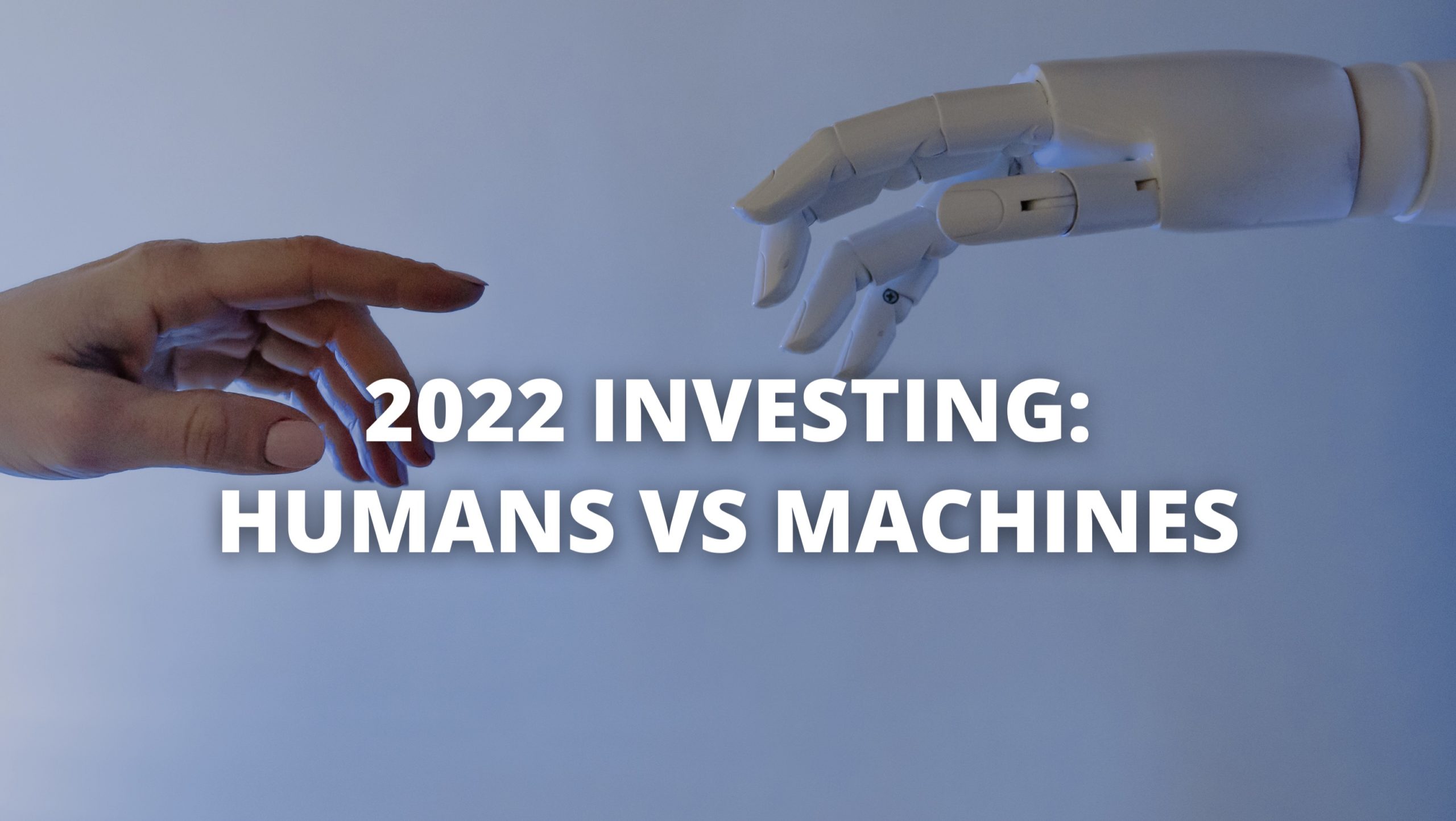A Look at Machine Trading in Human Stock Markets
I’m not a diehard baseball fan, but I did play in high school, so when the nightly TV lineup isn’t thrilling, I’ve been watching the New York Mets. Recently the commentators mentioned an interesting fact: the average speed of a fastball has been climbing each year and is getting closer to 95mph.
I struggled to hit a 70mph fastball, so imagining 95mph that reaches the plate in around 440 milliseconds (0.44 seconds) is mind-boggling. How does anyone have time to appropriately react? Truth is, they don’t, which is why we celebrate players who get a hit 3 out of 10 times.
If you think reacting to a major league fastball is tough, allow me to introduce you to the world of algorithmic and high-frequency trading. These investment strategies are programmed to trade based on sets of if/then statements and executes those trades in microseconds or 0.000001 seconds.
For example, an investor can build software that automatically sells the S&P 500 if it moves -5% lower from its current level. Or the program can be designed to buy the S&P 500 if the annual inflation reading is below market expectations. An investor using sophisticated technology can create countless variations of complex if/then statements to manage their investments, but no matter what, they all rely on data points as inputs.
Using Algorithms for Trading Stocks: What Data Inputs Matter Today
The 2022 stock market has been primarily focused on two data points: Federal Reserve interest rates and inflation readings. And it’s obvious that the machines are trading these announcements. Why is it obvious? Because we know the exact time the data is released to the public and can look at 1-day charts to see exactly what happened in the markets at that time.
(All the below charts were created using Barcharts.com.)
Jerome Powell, who is the current Chair of the Fed, has had periodic press conferences at 2:30PM EST to announce rate decisions. Check out these 1-day charts for the S&P 500 from the last four press conferences.
September 21, 2022 – Gained about +0.8% from 2:30PM to 2:40PM.
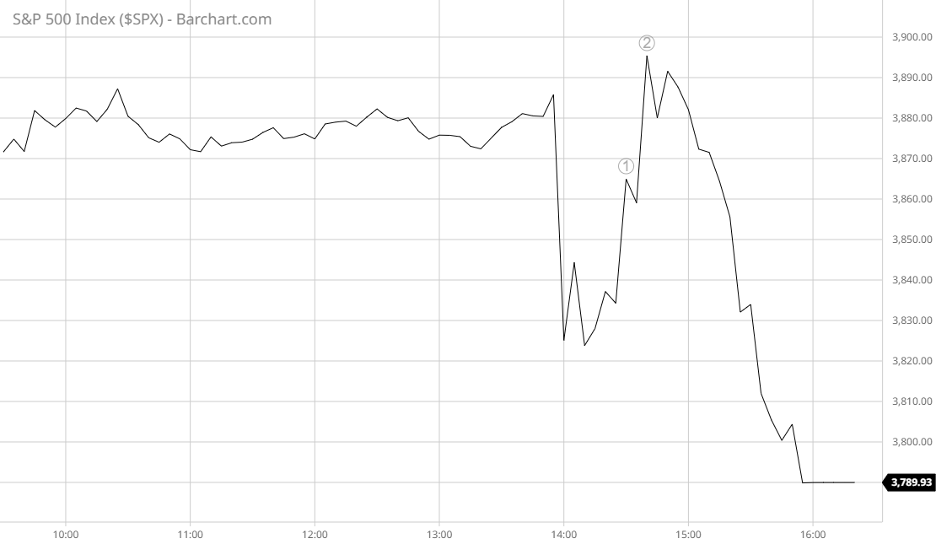
July 27, 2022 – Gained about +1% from 2:30PM to 2:40PM.
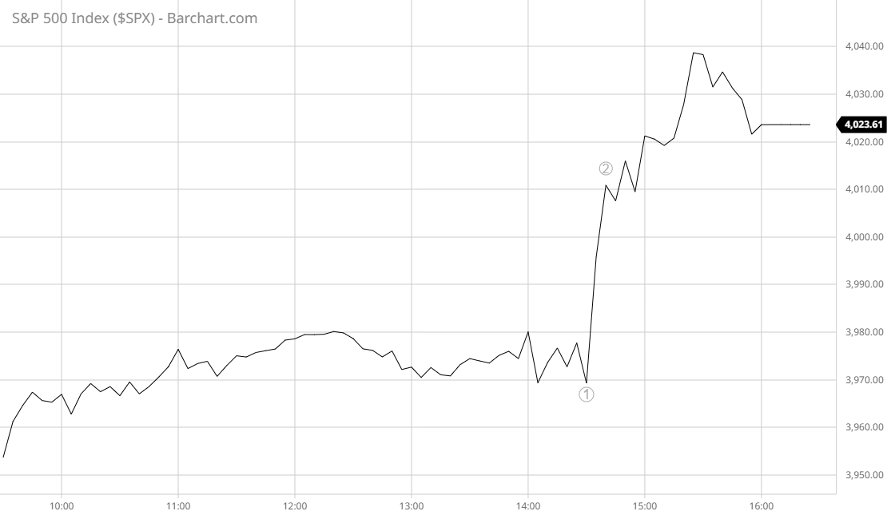
June 15, 2022 – Gained about +2% from 2:30PM to 2:40PM.
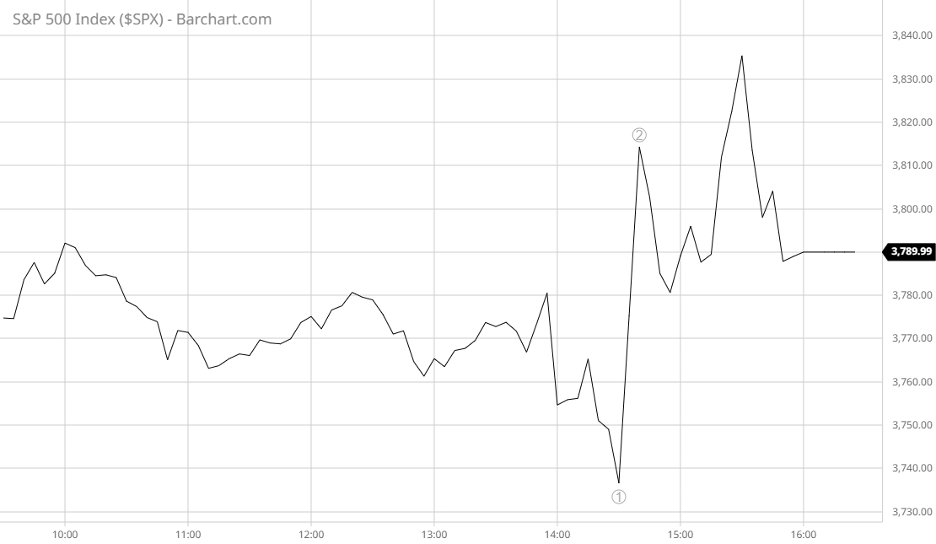
May 4, 2022 – Gained about +1.1% from 2:30PM to 2:40PM.
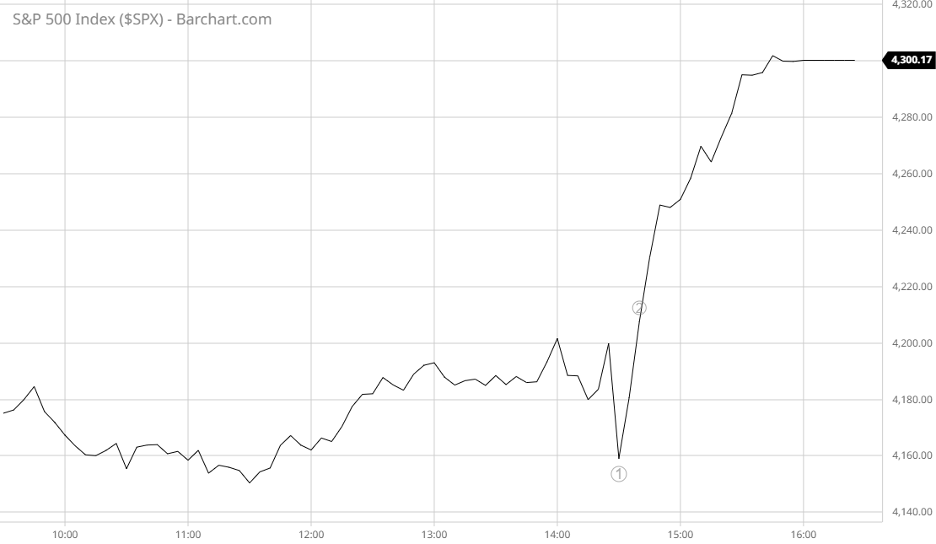
Please remember that while we have seen intraday rallies from the past three Fed announcements, it doesn’t always happen. We could also experience market selloffs from these events.
Inflation readings are released monthly at 8:30AM EST, and since it happens before the market’s officially open, the impact is visible in the S&P 500 Futures. Below are 1-day charts from the last three inflation data releases. Please note that these charts are in Central Time, so we are looking at 7:30AM CST.
September 13, 2022 – Lost about -2.4% in 10 minutes.
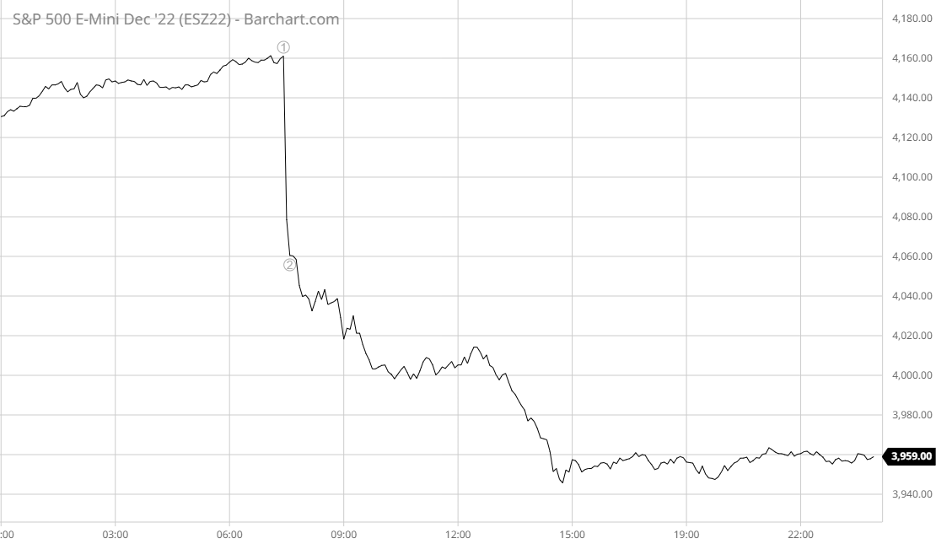
August 10, 2022 – Gained about +1.1% in 10 minutes.
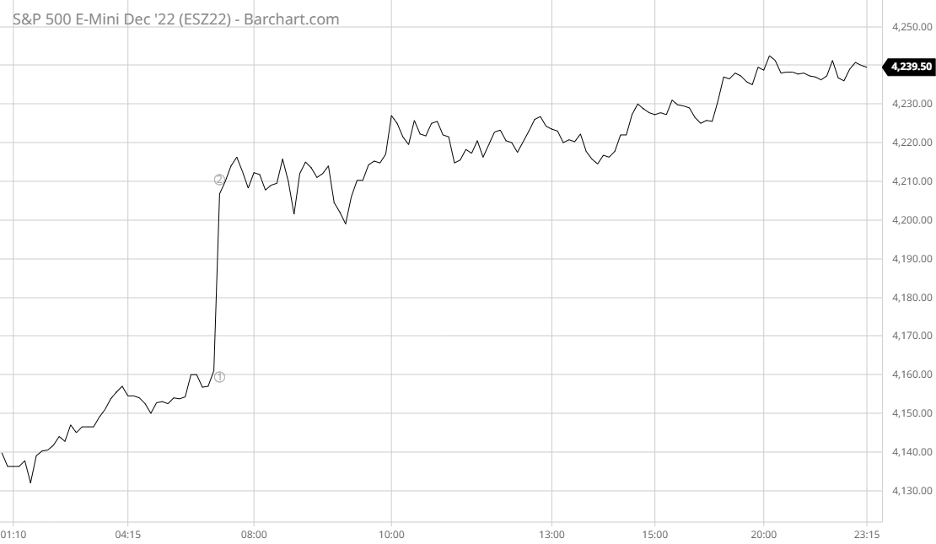
July 13, 2022 – Lost about -2.5% in 10 minutes.
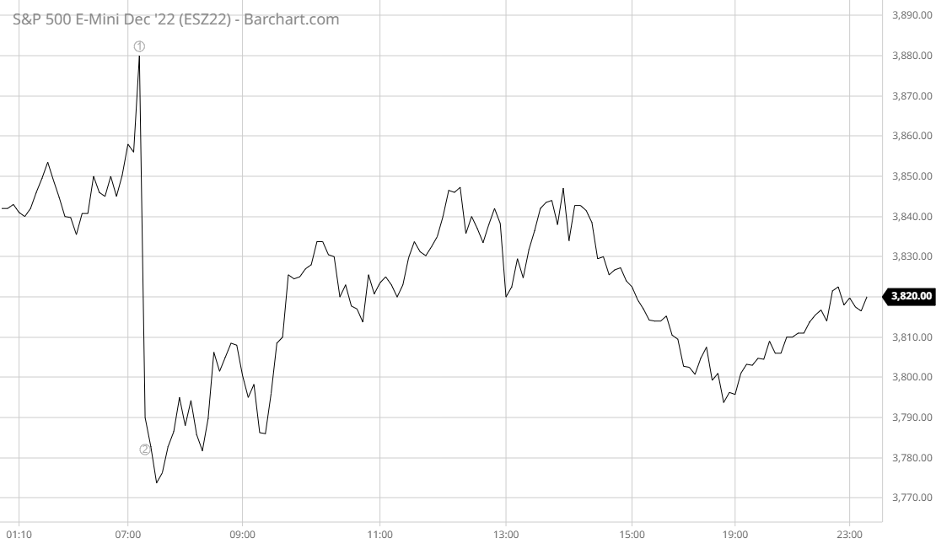
Land of the Machines
Federal Reserve announcements and inflation readings are detailed reports that contain layers of information and significance. If you know any human who can thoroughly analyze these reports, decide if the new data alters their investment perspective, and then enter the necessary trades to act on that decision, all within 10 minutes, I’d love to meet them. They must be the most productive person on earth. Some may even call them a machine…
I’d argue it’s just that: those aren’t humans trading, those are machines.
Machine-generated trades, which only factor in raw data and trade with little to no human oversight, can cycle on each other. Let me explain:
A couple computer trading algorithms buy or sell stocks due to a single market event that they determined is positive or negative. That buying or selling pushes markets higher or lower causing another set of computer trading algorithms to kick in and further move the market higher or lower. This can trigger another round of computer trading algorithms which intensifies the initial move in a blink of an eye. It’s at this point that the machines have control, and machines, while efficient, aren’t always logical.
How to Combat Algorithmic Trading? Find a Human Touch.
Research says a blink lasts between 0.4 and 0.1 seconds. Again, algorithmic and high-frequency trading can happen in microseconds (0.000001 seconds). They are truly trading faster than you can blink and were really only created to measure data instead of understanding how it factors into an investor’s personalized, long-term wealth plan.
For most people, they aren’t investing their wealth just for microseconds but have a much longer time horizon. Along with their unique goals and specific risk tolerance, aligning your investment strategy with your time horizon is vital to crafting your asset allocation.
Since I joined the Monument Team in June, this is the second time I am writing about the speed of market movements. There have been some incredibly fast moves this year that have made many people justifiably uncomfortable, but the answer isn’t simply altering your asset allocation. The answer is to contact your Wealth Advisor. A human, not a machine, who can thoughtfully help sort through the market noise and shovel a clear path, so you know exactly where you’re going. Like we’ve said many times at Monument, it’s the combination of having a rules-based investment process alongside the personal touch and guidance of an experienced Wealth Advisor that helps keep an investor’s goals on track.
Your asset allocation is a key piece that helps drive your wealth plan towards your goals, and unless your situation or goals have changed, you should try to ignore intraday market moves. It is tough not to let external factors and rapid market movements affect your mood or decisions, but your behavior, not the market, determines your wealth plan’s success. And isn’t it our emotions and behaviors that separate us from the cold, unfeeling world of machines?

